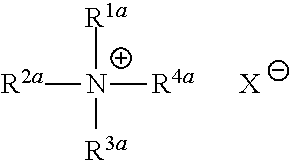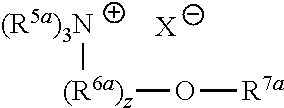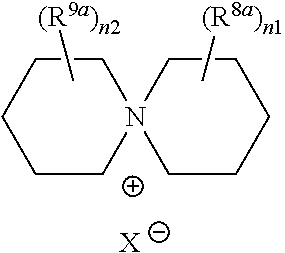Electrolyte solution and electrochemical device
a technology of electrochemical devices and electrochemical solutions, which is applied in the direction of hybrid capacitor electrolytes, capacitors, electrical equipment, etc., can solve the problems of reducing the voltage resistance or capacity adverse effects on the characteristics of the electrochemical device, etc., and achieves a high capacity retention factor and increase in resistance
- Summary
- Abstract
- Description
- Claims
- Application Information
AI Technical Summary
Benefits of technology
Problems solved by technology
Method used
Image
Examples
example 1
Production of Electrode
[0166]Active carbon particles (100 parts by weight) (YP50F, KURARAY CHEMICAL CO., LTD.), acetylene black (3 parts by weight) (DENKA BLACK FX-35, DENKI KAGAKU KOGYO KABUSHIKI KAISHA) as a conductive additive, Ketjenblack (12 parts by weight) (CARBON ECP600JD, Ketchen black international Inc.), a PVdF binder (7 parts by weight) (KF-7200, KUREHA CORP.), and the organosol (dispersing solution of PTFE and THV) obtained in Preparation 3 (solids content equivalent to 3 parts by weight) were mixed to prepare a slurry for an electrode.
[0167]An etched aluminum (20CB, JAPAN CAPACITOR INDUSTRIAL CO., LTD., thickness: about 20 μm) was prepared as a current collector. Both surfaces of this current collector were coated with a conductive coating (Varniphite T602, Nippon Graphite Industries, ltd.) using a coating device, and thereby conductive layers (thickness: 7±1 μm) were formed.
[0168]Then, the slurry for an electrode prepared above was coated on the conductive layers form...
example 2
Preparation of Electrolyte Solution—2
[0175]Sulfolane and acetonitrile were mixed at a volume ratio of 10 / 90 to give a mixed liquid. The resulting mixed liquid was blended with molecular sieve for dehydration thereof to prepare a solvent for an electrolyte solution. To this solvent for an electrolyte solution was added tetraethyl ammonium tetrafluoroborate (TEABF4) so as to a concentration of 1.0 mol / l, and the substance was uniformly dissolved therein.
(Production and Evaluation of Electrical Double Layer Capacitor)
[0176]An electrical double layer capacitor was produced in the same manner as in Example 1 using the obtained electrolyte solution. The resulting electrical double layer capacitor was measured in the same manner as in Example 1, except that the voltage applied was set to 3.0 V, for the resistance increase rate (internal resistance increase rate) and the capacity retention factor (capacitance retention), and evaluated. Table 2 shows the results.
example 7
Preparation of Electrolyte Solution—3
[0178]Sulfolane, acetonitrile, and HCF2CF2CH2OCF2CF2H were mixed at a volume ratio of 5 / 92.5 / 2.5 to give a mixed liquid. The mixed liquid was blended with molecular sieve for dehydration thereof, thereby preparing a solvent for an electrolyte solution. To this solvent for an electrolyte solution was added tetraethylammonium tetrafluoroborate (TEABF4) so as to a concentration of 1.0 mol / l, and the substance was uniformly dissolved therein.
(Production and Evaluation of Properties of Electrical Double Layer Capacitor)
[0179]An electrical double layer capacitor was produced in the same manner as in Example 1 using the obtained electrolyte solution. The resulting electrical double layer capacitor was measured in the same manner as in Example 2 for the resistance increase rate (internal resistance increase rate) and the capacity retention factor (capacitance retention), and evaluated. Table 3 shows the results.
PUM
 Login to View More
Login to View More Abstract
Description
Claims
Application Information
 Login to View More
Login to View More - R&D
- Intellectual Property
- Life Sciences
- Materials
- Tech Scout
- Unparalleled Data Quality
- Higher Quality Content
- 60% Fewer Hallucinations
Browse by: Latest US Patents, China's latest patents, Technical Efficacy Thesaurus, Application Domain, Technology Topic, Popular Technical Reports.
© 2025 PatSnap. All rights reserved.Legal|Privacy policy|Modern Slavery Act Transparency Statement|Sitemap|About US| Contact US: help@patsnap.com



